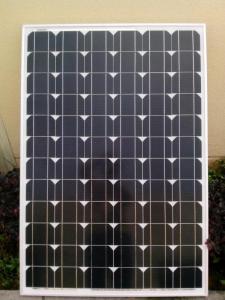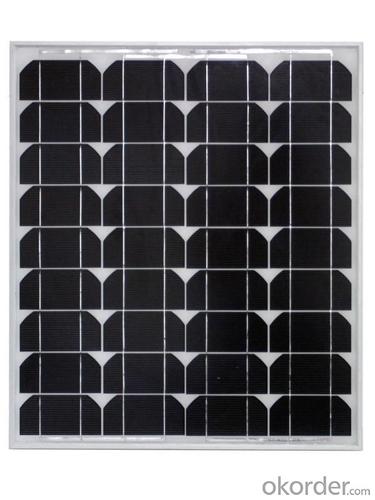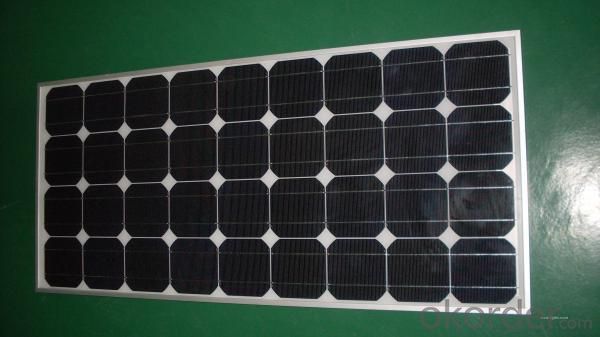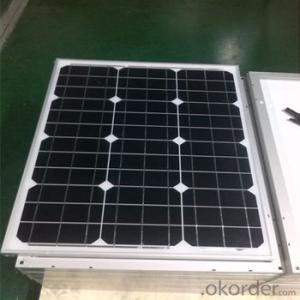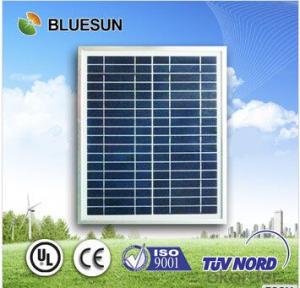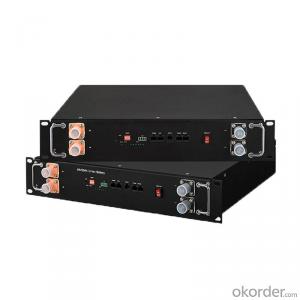Energysage Solar Panels - Solar Monocrystalline Series
- Loading Port:
- Shanghai
- Payment Terms:
- TT
- Min Order Qty:
- 1 pc
- Supply Capability:
- 100000/month pc/month
OKorder Service Pledge
OKorder Financial Service
You Might Also Like
Solar Monocrystalline Series
Introduction of Solar Monocrystalline Series CNBM Solar photovoltaic (PV) Panel is designed for large electrical power requirements. It is the optimal choice for both on-grid and off-grid power systems. CNBM Solar panel offers high performance of power per square foot of solar array. Monocrystalline silicon(c-Si): often made using the Czochralski process. Single-crystal wafer cells tend to be expensive, and because they are cut from cylindrical ingots, do not completely cover a square solar cell module without a substantial waste of refined silicon. Hence most c-Si panels have uncovered gaps at the four corners of the cells.
Characteristics of Solar Monocrystalline Series
I Solar Cell : High efficiency crystalline solar cell. Even if under the weak light, the solar module can produce maximum power output.
II Tempered glass (toughened glass): Anti-reflecting coating and high transmission rate glass increase the power output and mechanical strength of solar module.
III EVA and TPT: Using high quality EVA and TPT to prevent destroying and water.
IV AI frame: Without screw, corner connection. 6 holes on the frame can be installed easily.
V Junction box: Multi function junction box with water proof.
VI Long lifetime: ≥25 years; Less power decrease.
VII Good performance of preventing from atrocious weather such as wind and hails.
VIII Resisting moisture and etching effectively, not effected by geology.
Standard Test Conditions of Solar Monocrystalline Series
The opto-electrical specifications shown below are stabilized values being measured at Standard Test Conditions, Irradiance: 1000W/m2, Spectrum: AM1.5 at 25°C, The info below is subject to manufacturing tolerances. Where appropriate minutes of measurement are available and are used for the dimensioning of the installation.
Advantages of Solar Monocrystalline Series
• CNBM Solar performance guarantees for 25 years
• 2 years guarantee for workmanship
• Timeliness of delivery
CNBM International Corporation's products including Monocrystalline Solar Panel, Polycrystalline Solar Panel have received and enjoyed famous reputation in many countries and regions in the world .As a solar panel supplier in China, we strive to provide our customers with excellent service, superior products and unmatched value.
Characteristics of Solar Monocrystalline Series
Max Power Voltage Vmp (V) | 17.6V | 17.8V | 18V |
Max Power Current Imp (A) | 3.98A | 4.21A | 4.44A |
Open Circuit Voltage Voc (V) | 22.2V | 22.4V | 22.6V |
Short Circuit Current Isc (A) | 4.26A | 4.5A | 4.75A |
Max Power Pm (W) | 70W | 75W | 80W |
Temperature Coefficient of Cells
NOCT | 47℃±2℃ |
Temperature Coefficients of Isc (%/℃) | 0.064 |
Temperature Coefficients of Voc (%/℃) | -0.33 |
Temperature Coefficients of Pmp (%/℃) | -0.45 |
Mechanical Data of Solar Monocrystalline Series
Power | 70W/75W/80W |
Dimension | 970×550×30mm |
Weight | 6.5kg |
Tolerance | ±3% |
The dimension of the modules can be changed according to the demand of clients
Limits
Operating Temperature | –40 °C to +85°C |
Storage Temperature | –40 °C to +85°C |
Max System Voltage | 700V |
Guarantee of Solar Monocrystalline Series
Products Guarantee | 2 yrs free from defects in materials and workmanship |
Performance Guarantee | No less than 90% within 10yrs and no less than 80% within 20yrs |
Certificates | IEC, ISO, TUV, CE |
Production Equipment of Solar Monocrystalline Series
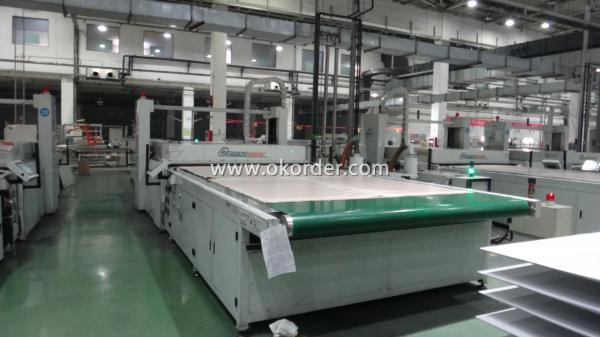
Package of Solar Monocrystalline Series
- Q:Can solar panels be installed on golf courses or recreational facilities?
- Yes, solar panels can be installed on golf courses or recreational facilities. The large open spaces and ample sunlight available at these locations make them suitable for harnessing solar energy. Additionally, solar panels can help these facilities reduce their carbon footprint and lower their energy costs.
- Q:Can I install my 2v solar panel straight to battery to charge the battery on my 989 ford ranger?
- If you were going to do that it would have to be the right size solar panel and you would need a solar battery charger so it doesn't fry your car battery
- Q:Can solar panels be used to power a university?
- Yes, solar panels can be used to power a university. Solar energy is a renewable and clean source of power, making it an ideal solution for large institutions like universities. By installing solar panels on rooftops, parking lots, or open spaces, universities can generate a significant amount of electricity to meet their energy needs. Additionally, universities often have large campuses with ample space for solar panel installations, making it feasible to generate a substantial amount of solar power.
- Q:i hav e a project for school we need to calculate cost to buy and install solar panels in our school
- Photovoltaic panels have almost zero recurring operating cost. Once installed, they are good for the next 20-25 years, typically. The exceptions are if the panels are not tilted, then you need to pay someone a few times a year to go up there with a mop to clean them. Otherwise, rain and morning dew make the dirt slide off automatically. The cost for your system will depend on the power needs of your school. It also depends on your location. As a government entity, a school is not eligible for the current 30% federal incentive, but may be for state incentives, depending on where you live. Anyway, once you size your system, which will be large, figure on $7 / watt cost for a large system. This would be less if you live in a state with good incentives. So for example, if you needed a 00 kW system, the price would be $700,000. $00,000 of that money is to replace the inverters that break after 5 years, so you would be paying $600,000 up front.
- Q:Has anyone had roof problems caused by rooftop solar panels?
- Rooftop solar panels might cause all sorts of maintenance or poor installation problems but I rather doubt at this point if we can say that there is an issue with solar panels in general that will cause a problem with the roof. Rather solar panels tend to shade a roof on its most exposed side. Without solar panels southern facing roofs will wear out faster than northern facing roofs. Installed solar panels will tend to make the roof last longer.
- Q:What about sources for straight forward solar powered products? Excluding toys, garden frogs and outdoorpath lights I have found few useful items for the home. What I have found are solar panels for under $00 each, inverters, rechargeable indoor lights and a few camping/RV products that are interesting. It seems to me that these could help me start to wean the family off the power company. I can't afford to go cold turkey and cover my roof with solar panels and I don't think the HOA would allow me to even if I could. Is anyone using solar on a small scale?
- Homemade okorder
- Q:Say if i had a 2KW system is thtat just one big solar panel or does the whole system have little solarpanels together.?
- As Aviophage says, there is plenty of info around. Solar panels produce electrical energy from the sunlight's energy. The sun puts out around 00W per square meter, and the panels are up to 20% efficient at converting this. If you are looking for a Grid Connected power system, they are usually made up of 24V modules about 50W each. The full voltage produced is then around 50V to 500V DC depending on the sun etc. They are connected to a specialised grid connect or grid interactive inverter (look up Sunny Boy for an example) which converts this to mains power for use around the house, while any remainder is exported to the supply network. The supply company may buy this at premium rates, and governments may provide subsidies to approved installations. There may also be carbon credit certificates when you buy a system. Not all places allow such things to be connected to the grid, but this market is rapidly changing. The links below should get you started.
- Q:I've seen a couple homes around my town that have solar power and I live in the Desert, where the sun is shinning and it gets really hot during the summer. We run our air conditioner a lot making our electricity bill high.So I just wanted to know if anyone has or knows anyone that has solar panels? are they worth getting and is it the same as having electricity?
- Solar electricity is electricity, it is just coming from a clean source rather than coal or oil burning generators. The solar panels make DC power, and the inverter converts it to AC and syncs it up with the electricity you buy from the electric company, it all goes into the same pool, there is no difference between them. gr8sk8rgold - Yes, you are right, installing a large solar system on your house can cost as much as a luxury car. What's the return on investment on that car? How has that car improved the environment? People never ask what the ROI is on anything they buy for their house, except for the solar system. Not sure why. However, the return varies greatly depending on where you live. In some European countries, feed-in-tariffs made the return almost immediate. Ontario, Canada just launched a program that can make a solar system earn you money. In the USA, the federal gov't will give you a 30% tax credit on the installed cost, and some states have rebates and incentives that can pay for a large percentage of the system. If you are building a new house and roll the cost into the mortgage, it'll barely change the monthly payments. You should absolutely first invest in conservation. It is much cheaper to save electricity than to make it. For every $ you spend on conservation, that's about $4 less to spend on solar.
- Q:The average solar panel produces 0% of the energy that is put into it. What is happening to the other 90%? Is it being reflected or is it being obsorbed by materials that are not a part of the solar cell? Is it possible to one day have near 00% efficient solar cell technology?
- Sunlight comes in many frequencies, that's why it's white. Solar Photovoltaics require a photon to displace an electron from a semiconductor and that only happens at one frequency depending on what the semiconductor material is, therefore only one exact frequency gets turned into power. They are working on using organic dyes or quantum dots to absorb the energy in different frequencies and re-emit the energy in the desired frequency. They also are working on using multiple semiconductor materials to try and capture more frequencies. The rest of the energy becomes heat which also reduces the efficiency of the solar cells. The lab record for solar photovoltaics is 42.8% efficiency and quantum dots promises to be 65% to 75% efficient. Keep in mind that fossil fuels are based on energy collected by photosynthesis over millions of years. The efficiency of photosynthesis with modern plants is about 0.5% and the theoretical maximum efficiency of photosynthesis is 6.6%. All of our current energy use is based upon a small fraction of 0.5% efficiency over millions of years.
- Q:I'm just geting into electonics and stuff. So I am trying to make a simple USB charger. I'm looking for at least 4 volts output. What I've got is two solar panels (detached) a 4 AA battery holder, and a circuit board with an led on it (took the solar panels out of old lawn lights. I need more charge out of my panels (I think) so I tried attaching them. I soldered the positive wire from one to the positive connection on the other and negative wire to negative connection. After doing so and checking the multimeter, it says I have no output at all. How do you connect them?
- You have to look at the power output of the cell. The first consideration has to do with voltage. A single cell with no load might output one volt or less. Wiring cells in series would double that output, at least in theory. (Internal resistance will lower the actual voltage.) You've wired the cells in parallel, however. Try unsoldering one electrode and then measure voltage output of each cell. There is still the issue of current output. I don't know if there will be enough with your setup. How many cells are there and what kind of batteries were they charging?
1. Manufacturer Overview |
|
|---|---|
| Location | Jiangsu, China |
| Year Established | 2004 |
| Annual Output Value | Below US$1 Million |
| Main Markets | Australia;Asia;South East Asia; South America;North America; Europe;Africa |
| Company Certifications | ISO 9001:2008; CE; TUV; UL |
2. Manufacturer Certificates |
|
|---|---|
| a) Certification Name | |
| Range | |
| Reference | |
| Validity Period | |
3. Manufacturer Capability |
|
|---|---|
| a)Trade Capacity | |
| Nearest Port | Shanghai |
| Export Percentage | 1% - 10% |
| No.of Employees in Trade Department | 200-300 People |
| Language Spoken: | English;Chinese |
| b)Factory Information | |
| Factory Size: | Above 8,000 Square meter |
| No. of Production Lines | 6 |
| Contract Manufacturing | OEM Service Offered;Design Service Offered |
| Product Price Range | Average |
Send your message to us
Energysage Solar Panels - Solar Monocrystalline Series
- Loading Port:
- Shanghai
- Payment Terms:
- TT
- Min Order Qty:
- 1 pc
- Supply Capability:
- 100000/month pc/month
Offcanvas right
OKorder Service Pledge
OKorder Financial Service
Similar products
New products
Hot products
Hot Searches
Related keywords


